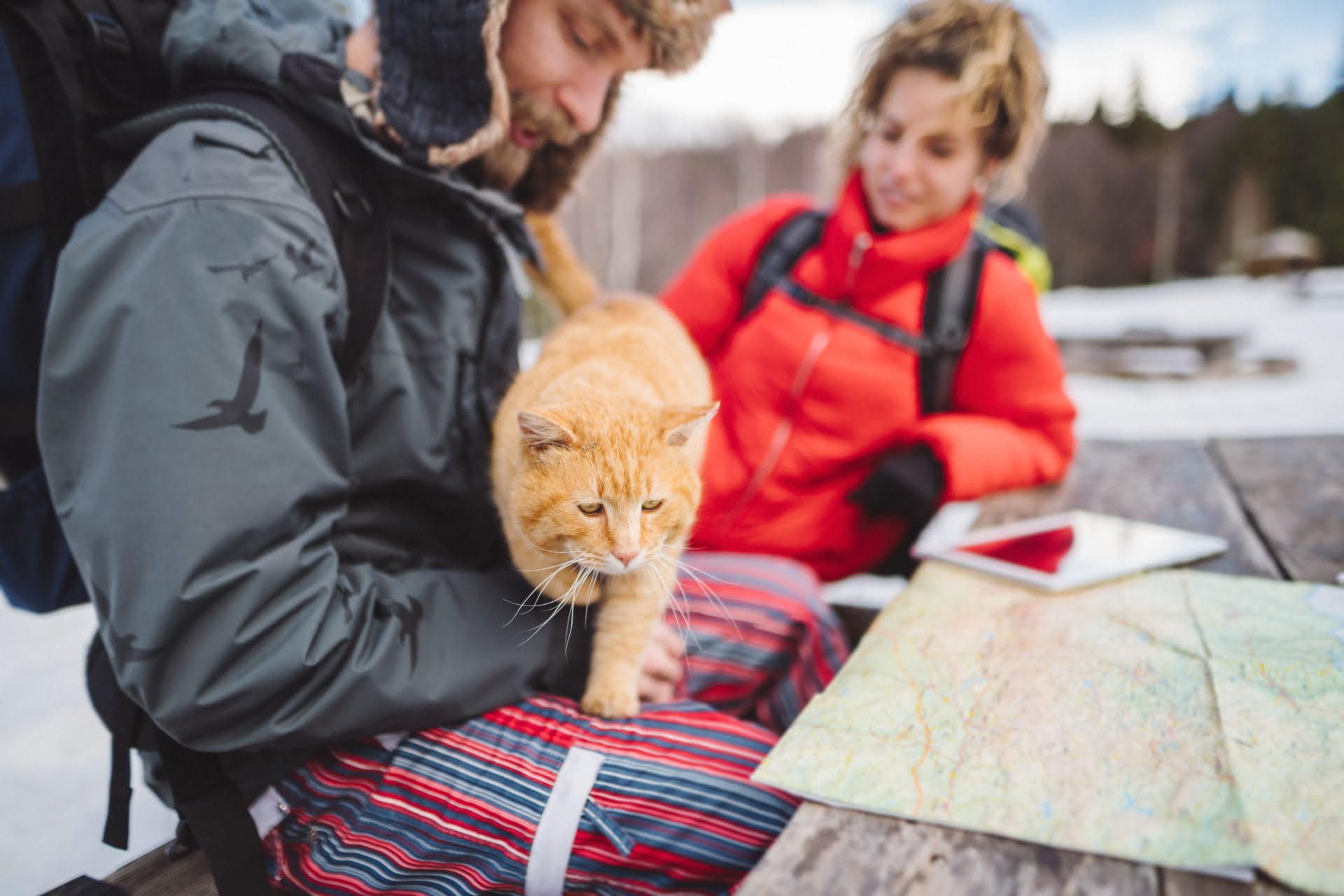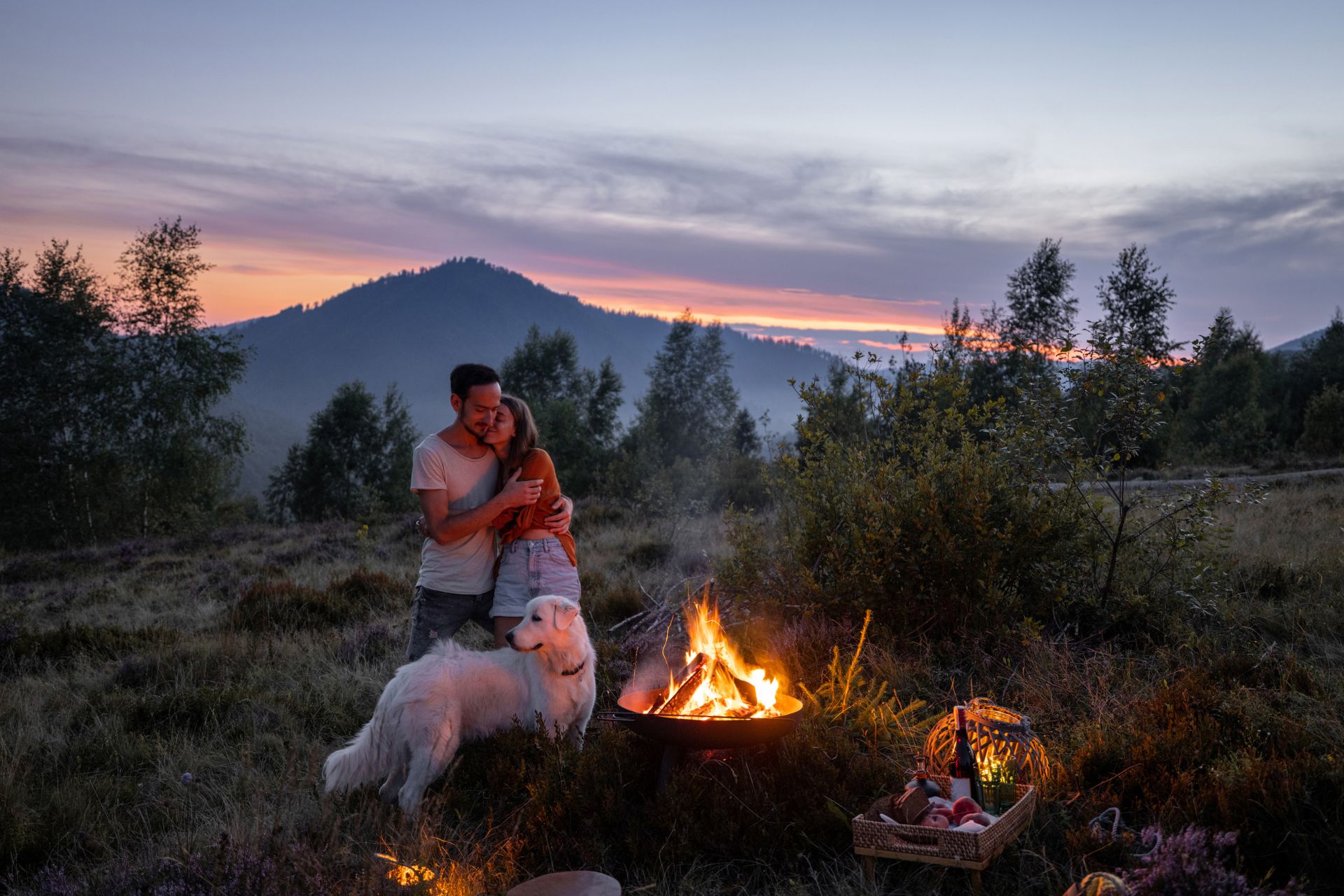This guide delves into the world of dog breeds best suited for hiking and camping adventures with your family. We’ll explore high-energy breeds built for adventure, well-balanced medium-energy companions, and even gentle giants who excel on the trail. We’ll also address essential considerations for training your dog, packing for your trip, and ensuring their safety on the outdoors.
So, lace up your hiking boots, grab your backpack, and get ready to discover the perfect best dogs for hiking and camping alongside your active family!
- Introduction
- Understanding Your Needs as an Active Family
- Top Dog Breeds for Hiking and Camping
- High-Energy Breeds Built for Adventure
- Medium-Energy Breeds for Balanced Adventure
- Large and Gentle Companions for the Trail
- Essential Considerations Before Hitting the Trail
- Training and Preparation for Your Dog
- Packing for Your Canine Companion
- Dog Safety on the Trail
- Conclusion: Embracing the Adventure with Your Canine Partner
- Frequently Asked Questions (FAQs)
Introduction
Imagine this: crisp mountain air filling your lungs, breathtaking views unfolding before you, and your furry best friend by your side, eagerly padding down the trail. Hiking and camping with your dog can be an incredibly rewarding experience, fostering deeper bonds, shared adventures, and a healthy dose of exercise for everyone involved. But before you hit the trail, a crucial first step awaits: choosing the perfect canine companion for your active lifestyle.
Understanding Your Needs as an Active Family
The ideal hiking and camping dog depends heavily on your family’s unique needs and preferences. Here are some key factors to consider before welcoming a furry adventurer into your pack:
- Activity Level: Are you a family that enjoys weekend hikes or do you dream of multi-day backpacking trips? Choosing a dog with a matching energy level is crucial.
- Experience Level: Are you seasoned dog owners or first-time pet parents? Some breeds require more experienced handlers due to their intelligence and boundless energy.
- Preferred Hike/Camp Difficulty: Do you favor leisurely strolls on scenic trails or challenging climbs with varied terrain? A dog’s size, strength, and agility should complement your chosen adventures.
- Family Size and Living Situation: Living in an apartment with limited space might call for a smaller breed, while families with a spacious house can accommodate larger dogs.
Top Dog Breeds for Hiking and Camping
Now that you have a clearer picture of your ideal canine companion, let’s explore some fantastic dog breeds that excel on the hiking and camping trail:
High-Energy Breeds Built for Adventure
These breeds are powerhouses of energy, perfectly suited for families who crave challenging hikes and outdoor adventures.
- Australian Shepherd: This intelligent and athletic dog thrives on physical and mental stimulation. Aussies excel at dog sports like agility and can happily keep up with even the most adventurous families.
Potential considerations: Aussies require consistent training and mental challenges to prevent boredom and destructive behavior.
- Border Collie: Renowned as the smartest dog breed, Border Collies have boundless energy and love a good challenge. They excel at learning tricks and commands, making them highly trainable companions.
Potential considerations: Border Collies need a job to do, such as fetch or tracking. Their herding instincts may require careful management around children and small animals.
- Vizsla: Affectionate and athletic, Vizslas are born to run. Their sleek build and boundless energy make them perfect for long hikes and exploring new trails.
Potential considerations: Vizslas can suffer from separation anxiety and have a high prey drive. Early socialization and training are crucial for a well-adjusted hiking buddy.
Medium-Energy Breeds for Balanced Adventure
These breeds offer a fantastic balance of energy and temperament, ideal for families who enjoy regular hikes and camping adventures:
- Labrador Retriever: Friendly, eager to please, and with a love for water, Labrador Retrievers are quintessential family dogs. Labs are easily trained, making them great companions for hikes and adventures of all levels.
Potential considerations: Labs are prone to overeating and require good leash training. Be mindful of portion control and practice walking etiquette on the trail.
- German Shorthaired Pointer (GSP): Energetic, trainable, and with a natural curiosity, GSPs are excellent hiking companions. They love exploring new scents and terrains, adding excitement to your outdoor adventures.
Potential considerations: GSPs have a high prey drive and require regular exercise to stay focused and well-behaved. Keep them leashed on hikes and be aware of potential distractions like wildlife.
- Beagle: Beagles possess an incredible sense of smell, making them curious and enthusiastic trail companions. They love following scents and exploring new environments, adding a unique perspective to your hikes.
Potential considerations: Beagles have strong hunting instincts and require a secure leash on the trail to prevent them from chasing interesting scents.
Large and Gentle Companions for the Trail
These gentle giants offer a sense of security and companionship on the trail, perfect for families who enjoy moderate hikes and camping adventures:
- Bernese Mountain Dog: Loyal, strong, and with a love for cold weather, Bernese Mountain Dogs are fantastic companions for hikes in cooler climates. These gentle giants enjoy exercise but at a more moderate pace compared to high-energy breeds.
Potential considerations: Bernese Mountain Dogs require spacious living due to their large size. They are also prone to drooling, so be prepared for some cleanup during your adventures.
- Newfoundland: Nicknamed the “gentle giant,” Newfoundlands are known for their calm temperament and love of water. These majestic dogs are excellent companions for camping trips where they can enjoy swimming and exploring the outdoors.
Potential considerations: Newfoundlands require access to water to stay cool, especially during hot weather hikes. They also tend to drool, so be prepared with a bandana or towel for cleanup.
- Golden Retriever: Friendly, intelligent, and with a love for retrieving, Golden Retrievers are popular family dogs for a reason. These eager-to-please companions are easily trained and excel at hiking and camping adventures.
Potential considerations: Golden Retrievers are prone to shedding and require regular grooming to maintain their beautiful coats.
Essential Considerations Before Hitting the Trail
Now that you’ve found the perfect breed for your active family, here are some crucial things to consider before embarking on your first outdoor adventure together:
Training and Preparation for Your Dog
- Basic Obedience Training: Ensure your dog has a solid foundation in basic commands like sit, stay, come, and heel. This not only ensures a smoother hiking experience but also keeps your dog safe on the trail.
- Leash Manners and Trail Etiquette: Teach your dog proper leash manners to avoid disrupting other hikers and wildlife. Familiarize them with trail etiquette, such as staying on designated paths and respecting fellow adventurers.
- Leave-No-Trace Principles: Responsible dog ownership extends to the outdoors. Practice “Leave No Trace” principles by carrying waste bags and properly disposing of dog waste to leave the trail pristine for everyone.
Packing for Your Canine Companion
- Choosing the Right Gear: Invest in a comfortable harness that distributes weight evenly, a sturdy leash for controlled walks, and a backpack for carrying essentials on longer hikes. Consider dog booties for paw protection on rough terrain.
- Food and Water Provisions: Pack enough water and food for your dog based on the duration and intensity of your hike. Bring a portable water bowl and ensure your dog stays hydrated throughout the adventure.
- First-Aid Kit: Prepare a basic first-aid kit for minor injuries your dog might encounter on the trail. Include antiseptic wipes, bandages, and any medications your dog might require.
Dog Safety on the Trail
- Parasite Prevention and Vaccinations: Ensure your dog is up-to-date on vaccinations and receives regular parasite prevention medication to protect them from fleas, ticks, and heartworm.
- Awareness of Wildlife Encounters: Be aware of potential wildlife encounters on the trail. Keep your dog leashed in areas with wildlife and educate yourself on how to react safely to animal encounters.
- Hot Weather Precautions: During hot weather hikes, prioritize your dog’s safety. Plan hikes for cooler times of the day, bring plenty of water, and avoid strenuous activity in the midday heat. Consider dog cooling vests or booties for added protection.
Conclusion: Embracing the Adventure with Your Canine Partner
Choosing the right dog breed for your active lifestyle opens the door to countless shared adventures outdoors. With proper training, preparation, and keeping your dog’s safety in mind, you can create lasting memories and strengthen the bond with your furry best friend.
Remember, responsible dog ownership and respecting the outdoors are crucial aspects of enjoying hikes and camping trips with your canine companion. So, start planning your next adventure, lace up your boots, and get ready to explore the beauty of nature with your four-legged friend by your side!
Frequently Asked Questions (FAQs)
Here are some commonly asked questions regarding dogs and outdoor adventures:
1. What is the best age to start taking my dog hiking?
A good rule of thumb is to wait until your dog’s growth plates have closed, typically around 12-18 months for larger breeds. Consult your veterinarian for specific advice regarding your dog’s breed and development.
2. Are there any dog breeds that shouldn’t go hiking?
Brachycephalic breeds (short-nosed dogs) like Pugs and Bulldogs can struggle with breathing during strenuous activity, especially in hot weather. Consult your veterinarian before taking these breeds on hikes.
3. How can I keep my dog cool during a summer hike?
Plan hikes for early mornings or evenings when temperatures are cooler and choose trails with shade and water access. Bring a portable cooling bandana or vest and offer frequent water breaks throughout the hike. Avoid strenuous activity during the midday heat.
4. What should I do if I encounter wildlife on the hike?
Stay calm, leash your dog securely, and never approach or feed wild animals. Educate yourself on common wildlife in your area and know how to react safely to potential encounters.
5. Can I go hiking with my cat as well?
Absolutely! While hiking with dogs is more common, cats can also enjoy the outdoors under the right circumstances.











